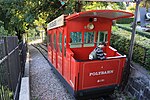ETH Zurich (English: ETH; Swiss Federal Institute of Technology in Zürich; German: Eidgenössische Technische Hochschule Zürich) is a public research university in Zürich, Switzerland. Founded by the Swiss federal government in 1854, it was modeled on the École polytechnique in Paris, with the stated mission to educate engineers and scientists; the school focuses primarily on science, technology, engineering, and mathematics, although its 16 departments span a variety of disciplines and subjects.Like its sister institution, the Swiss Federal Institute of Technology in Lausanne (EPFL), ETH Zurich is part of the Swiss Federal Institutes of Technology Domain, a consortium of government universities and research institutes under the Swiss Federal Department of Economic Affairs, Education and Research. As a public institution, it grants admission to every Swiss resident who has matriculated. As of 2021, ETH Zurich enrolled 24,500 students from over 120 countries, of which 4,460 were pursuing doctoral degrees.ETH Zurich has a world-class reputation in academia and industry, particular in science and technology. It regularly ranks among the top three to five universities in Europe and one of the top 15 to 20 globally. In the 2022 QS World University Rankings, the university ranked eighth in the world and fourth in Europe in academic excellence, with 2021 edition placing it fourth in the world for engineering and technology (second in Europe) and first for earth and marine science. The Times Higher Education World University Rankings of 2022-23 ranked ETH Zurich 11th worldwide.
Students, faculty, and researchers affiliated with ETH Zurich include 22 Nobel laureates, two Fields Medalists, three Pritzker Prize winners, and one Turing Award recipient, including Albert Einstein and John von Neumann. It is a founding member of the IDEA League and the International Alliance of Research Universities (IARU), and a member of the CESAER network.










